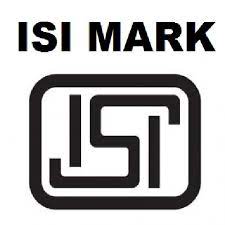What are the Benefits of BIS Registration for Manufacturing Units in India?
The BIS Act 2016 established the National Standard Body of India for the harmonious growth of the operations of standardisation, BIS marking, and quality certification of goods, as well as things associated with or incidental thereto. BIS has benefited the national economy in a variety of ways, including providing safe, dependable quality goods, reducing consumer health risks, promoting exports and imports as a substitute, and controlling variety propagation, among other things, through standardisation, certification, and testing. BIS’s mission is to examine product samples at their preliminary and surveillance phases. In India, the BIS has eight central laboratories, four regional laboratories, and three branch laboratories.
The Indian government encourages BIS registration in Delhi for the following reasons:
- The BIS Certification ensures that the product is of high quality.
- The BIS Certification protects the public’s health.
- BIS certification safeguards customers from potentially dangerous items.
- Consumer confidence is boosted by BIS certification.
BIS Registration Product Scheme :
The BIS Registration product scheme allows the firm to put the globally recognized ISI Mark on its products, certifying that they are pure and healthy. Many manufacturers also do ISI mark registration online as well. A Foreign Manufacturers Certification Scheme is part of the BIS Registration product system, and it allows foreign manufacturers to be licensed to use the BIS standard mark.
BIS Registration Benefits for Manufacturing Units in India :
1.Make certain that quality guidelines are followed to:
BIS adopts a holistic approach to quality compliance implementation for all manufacturers. BIS-registered companies are expected to manufacture their products to a certain standard of quality. Surprising inspections of the area where the production is normally carried out are conducted by BIS investigators. It enables the BIS to monitor manufacturing facilities for product quality and compliance.
2. Ensure that the product is genuine :
Products that lack quality certification may be quickly withdrawn from the market, but they will never earn the reputation or confidence of customers. Uncertified items are vulnerable to poor performance and might pose a health hazard. However, the majority of end-users are completely unaware of this information.
BIS-approved items, on the other hand, left no space for criticism in this area, claiming to provide superior performance and dependability. This is one of the most major advantages of BIS registration.
3. Minimization of environmental risk :
BIS certification covers 900 distinct product categories, some of which may be detrimental to the environment. Electronics, in particular, are a major source of pollution and health hazards. In order to decrease environmental risk, BIS has taken a number of initiatives in this direction, including developing a standardised method for producing such items.
Furthermore, under BIS’s mandated rules, the usage of certain materials and substances is forbidden. As a result, it is crucial in defining the quality standard for industrial safety and the environment. For BIS certification many manufacturers also apply for BIS certificate online.
4.Laboratory Quality Control Testing:
Since it focuses on quality standards, BIS has integrated state-of-the-art labs in various parts of the country. These labs were built to evaluate the quality of a variety of things. The investigating officials randomly choose a few samples from the registration facilities during the on-site inspection and submit them to the lab for testing.
After it has been certified, the product will be returned together with the test results. Although this technique appears to take a long time, it is necessary for assuring high quality.
The procedure of BIS Registration :
1.The Licensing Procedure :
Throughout the licensing procedure, the following activities must be taken :
- For submitting applications, there will be a deadline decided.
- After that, the BIS Officer will perform a preliminary inspection.
- Following the inspection, the samples will be evaluated.
- When all of the assessments have been completed, the final result will be established.
2. Process of Surveillance :
Following the inspection, the facility is subjected to a detailed assessment known as the surveillance procedure. The following are the steps involved in the surveillance process:
- The inspecting authority will pay a visit to the factory and testify about it. After the testing, the samples were collected.
- The samples will be sent to a third-party laboratory for examination.
- The test report will provide an overview of the complaint or comments on the inquiry.
- The performance evaluation report will be completed.
- Permission is granted once the report has been considered.
These are the BIS registration benefits for manufacturing units in India and the actions which are taken throughout the licencing process.




Comments
Post a Comment